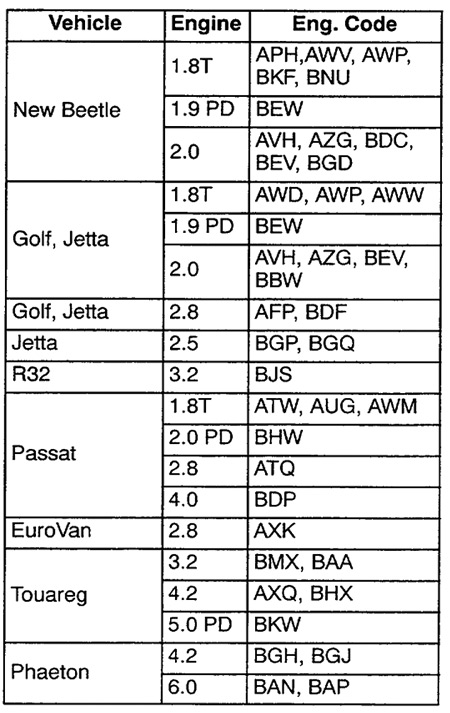If DTC P1603 (18011) “Control unit faulty” is stored in the DTC memory on an affected vehicle, do not automatically replace ECM for this condition. First perform the following procedure.
 Diagnostic Procedure:
Diagnostic Procedure:
1. Verify that the battery voltage and condition are OK. (Charge and load test as necessary).
2. If the battery voltage is low, correct the reason for the low battery voltage.
3. With the battery fully charged, connect the VAS 5051/5052 diagnostic tool.
4. Switch on the ignition.
5. Select “Vehicle Self Diagnosis.”
6. Interrogate and erase the DTC memory.
7. Perform throttle adaptation (see appropriate Repair Manual and Repair Group 23 or 24).
8. Start the engine and allow it to run briefly, then switch it off.
9. Repeat step 8 (start/shut off) five times.
10. Check the DTC memory again.
11. If the MIL does not illuminate and a DTC has not returned, a low battery condition most likely caused the DTC to be stored.
12. Set the readiness code.
13. If the MIL illuminates or a DTC has been stored again, replace the ECM (see appropriate Repair Manual and Repair Group 23 or 24) and set the readiness code.
Courtesy of IDENTIFIX.













